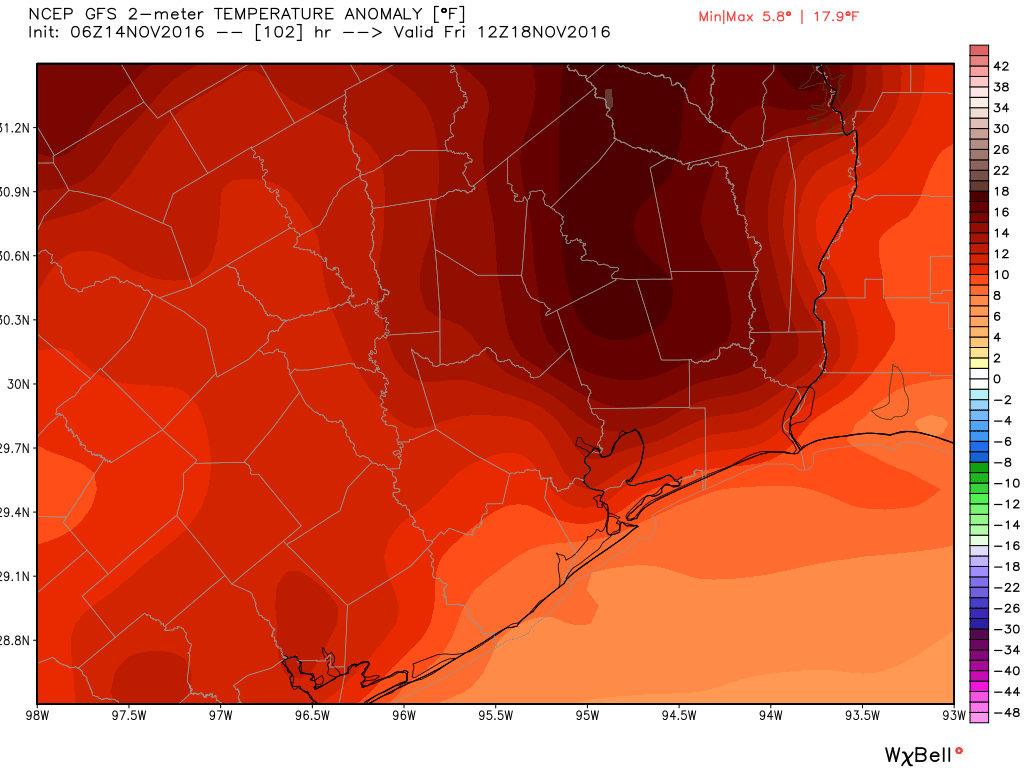It is a clear, cool fall morning across the Houston region, and although we will see gradually warming temperatures toward the end of the work week, another cool front will arrive by next weekend to keep conditions fall-like.

Today
Skies cleared this morning for great conditions to view the Supermoon, which set at 6:39am this morning. It will still look great tonight. Meanwhile temperatures will rise into the upper 70s today under partly to mostly sunny skies. Lows tonight won’t be nearly so cold, likely only falling to around 60 degrees for most of the region.
Tuesday and Wednesday
The region will receive another shot of drier air on Tuesday, and this combined with full sunshine will allow temperatures to reach about 80 degrees. But because it shouldn’t be excessively humid, it will feel quite pleasant outside. Lows will range from the upper-50s to lower-60s.
Thursday
As high pressure builds over the Houston we’ll see the return of more humid conditions beginning later on Wednesday and into Thursday. Highs Thursday should be in the low-80s, and I wouldn’t expect lows to fall much below 70, if at all, on Thursday night and Friday morning. Under partly to mostly cloudy skies it will feel quite humid. But this return of wamrer weather will be short-lived.




